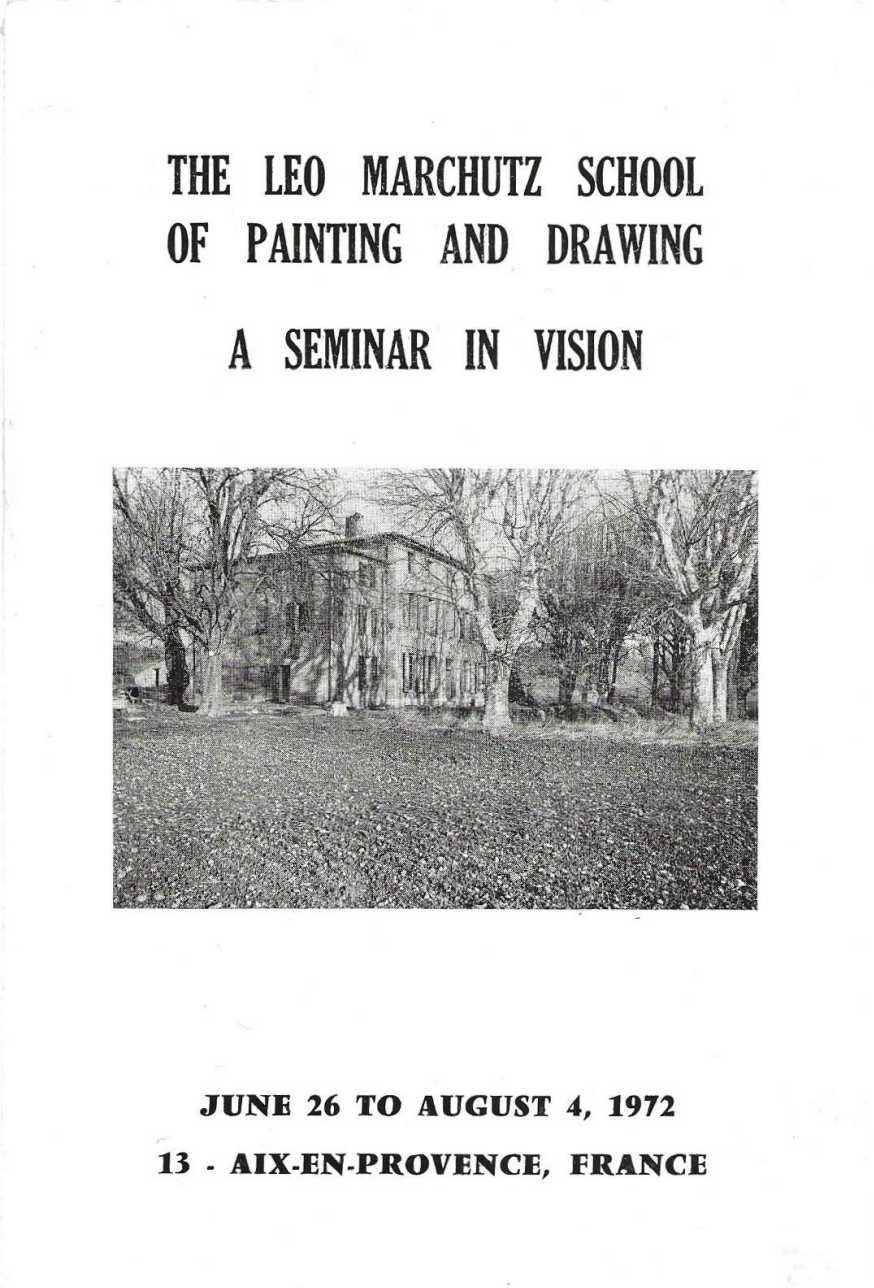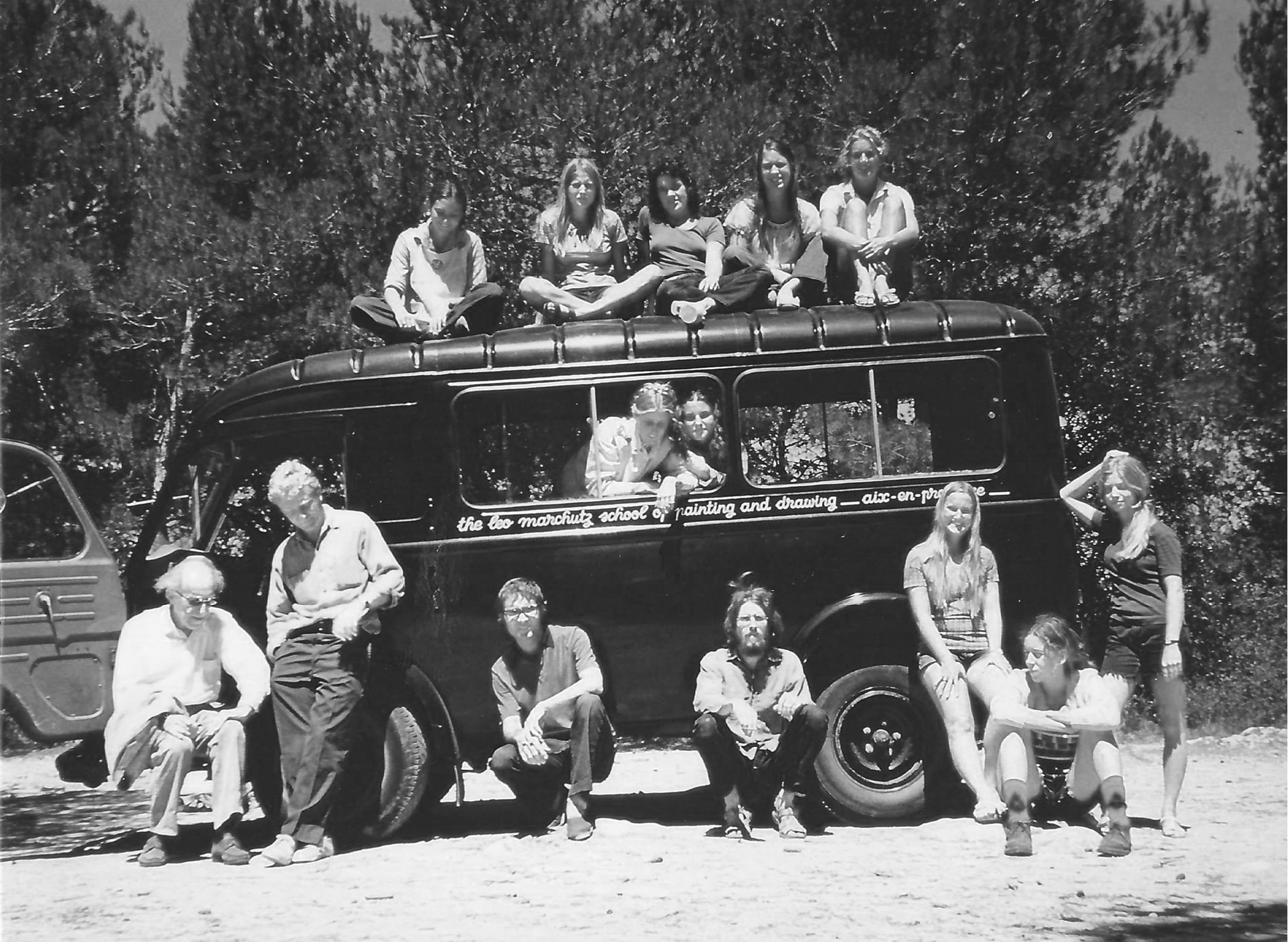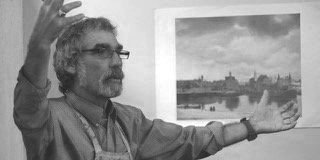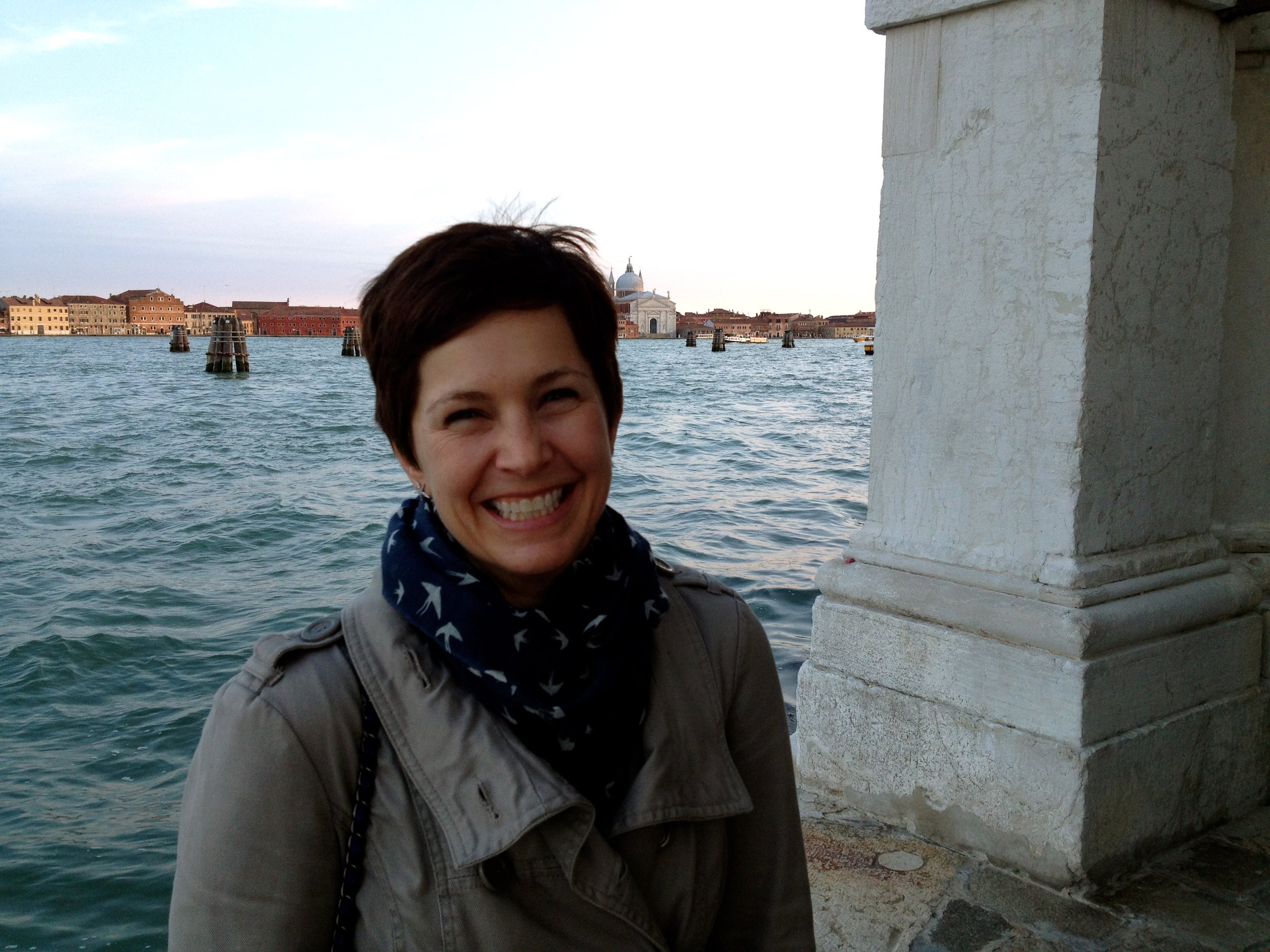“Only I imagine that a generation later or in one of the later generations — this working decisively without hesitation, measuring correctly in an instant, skillful mixing of the color, drawing at lightning speed — a generation will come that will do this...”
History & Legacy
Leo Marchutz came to Aix-en-Provence in 1928 and after 44 years of sustained work, as an artist and Cézanne scholar, founded, with his beloved apprentices and colleagues, the Leo Marchutz School of Painting and Drawing.
Begun in 1972, the Leo Marchutz School of Painting and Drawing has gone through many iterations in its 50-year history. With time, a group of artists has evolved, working within similar guiding principles, which have affected, in myriad ways, each artist’s individual and unique imagination.
With an eye toward developing and furthering this unique legacy — 94 years of sustained artistic effort in Aix-en-Provence — we are turning our attention to various projects — workshops, exhibitions, residencies, research, and more — with the ultimate goal of creating a lasting cultural center in Aix-en-Provence.
The Marchutz legacy of art and art education has inspired thousands of artists and students throughout a fascinating history along the famed Route de Cézanne, at the Châteaunoir, and in the magnificent streets of Aix-en-Provence. We aim to preserve and continue this legacy for future generations.
As the Leo Marchutz School of Painting & Drawing celebrates more than 50 years in existence, we gather with excitement, enthusiasm, and the belief that now is the moment to solidify and finally fully embrace so much light, so much joy, and so much community within a sustainable and long-term format. We invite you to read on to learn about the history and legacy of the Leo Marchutz School of Painting & Drawing.
HISTORY
In 1928, a German-born artist named Leo Marchutz (1903-1976) came to Aix-en-Provence to see the motifs of Paul Cézanne. Inspired by the light and structure of the landscape, he stayed, living at the Châteaunoir for forty years. A foremost authority on the work of Cézanne, Marchutz was also an innovator in the fields of lithography, painting, drawing, and art education.
Like Cézanne, who advocated study from nature and study of the masters with almost equal fervor, Marchutz saw in this dual allegiance the path to self-discovery for the artist. In 1972 Marchutz helped found the Leo Marchutz School of Painting and Drawing, along with his assistants Sam Bjorklund and William Weyman. The school was established to emphasize the importance of seeing and painting the visible world while contemplating the art of the past.
When Marchutz arrived in Aix, he had a sensation that he had discovered something special. He did not know then that he would spend the rest of his life there, nor that by taking a room at the Châteaunoir beneath the Mont Sainte Victoire, his path would lead to a forty-year collaboration with art historian John Rewald and the most illustrious Cézanne scholars. In Aix, Marchutz found lifelong inspiration; he drew views of the mountain, moments in the architecture, producing images of extraordinary balance, solemn character, and beautiful light. His art and humble nature prompted from the architect Fernand Pouillon, his friend, neighbor, and patron, the gift of his very own studio on the Route du Tholonet. Marchutz did not come to Aix to make a school, but instead inspired one, formed in his name, that has become a cultural bridge, welcoming, immersing, and touching the lives of thousands of American students of art.
-
“As a young man I worked very methodically in the museums; I went there really to understand things, to get things, so to speak, into my system. I was always interested in how a painting was made and how the parts were integrated. I remember there were times when I only looked at how the different artists treated the ears, the nose, the hair, how they made the neck come out of the body. By doing that you get a kind of knowledge of how to do it, or how not to do it.
“I remember certain paintings by Titian for instance. I looked a hundred times at them and so I derived a very clear vision of how they were done. After experiencing the paintings of many centuries like this, litlle by little, a notion of what unifies them begins to grow. You see each painting as a member of a great family. And the single member becomes less important than, let us say, the family resemblance. I always looked for this family resemblance more than for the particular expression of such and such an artist. In other words I forced myself to look at what unified all these works. This I believe gave me an understanding of the past which few students have these days.
“Also, when I was very young I was taken with tropical plants and animals and I spent many afternoons in the zoological gardens in Nuremburg. I got a lot out of that, a sense of weight, movement, form, everything one looks for in nature. I never drew a single animal or plant, but I looked at them closely. This helped me later formy study in the museums, because I did it the same way. I compared animal with animal and I think if I had not looked so closely and methodically at living creatures, I probably would have been less attentive to works of art.”
Here one must underline the importance of three people, William Weyman, Sam Bjorklund, and Amos Booth, who each understood the humble—yet acute and profound—work and thoughts of Leo Marchutz. They worked tirelessly, along with the painter François de Asis, each in their own way, to create a form, a school, a place, to guide and inspire artists and art students.
William Weyman, an artist and man of letters, must be noted as the mind, the imagination, who with each simple utterance from Leo Marchutz could plomb his vast wealth of literature and art criticism to find the perfect text to give to students to pique their minds and develop their thoughts about art. From 1972 until 1981, then later from 1985 to 1989, Weyman crafted his “art criticism seminar,” which has continued to meet almost every Friday morning since 1972 until today—the dialogue amongst students and artists in front of slide images of great works, every week, for three to four hours, is without parallel. T.S. Eliot, Charles Baudelaire, Thomas Merton, Flannery O’Connor, Van Gogh letters, Lionello Venturi, and so many more, brilliantly brought to the student in the face of great works of art.
-
“What is the Marchutz School? It is a school of vision. This means that the school helps its students to see - with their eyes of course, but with their minds and hearts as well – and to paint what they see.
“At the school, we give as much emphasis to looking as we do to painting and drawing. “Look before you draw, look for the essential in what’s there, and try to understand it.”
“We look closely at nature. In history and criticism classes, and in the museums, we look carefully at works of art as well, and with the same intention: to try to see, to understand. We look at great works and not-so-great works and we look at our own. We compare and contrast in order to discover the recurring principles underlying those images which teach us most about the nature of art and the relationship of art to nature.
“Why, in this most modern of worlds, do we take this traditional approach to the study of art? First, because it derives from no theory of art education but from the habits of great artists themselves. Second, because such an approach has, paradoxically, led towards the most authentic contemporary art.
“At the Marchutz School students discover that it is precisely through their honest commitment to see and understand the things outside themselves –especially the visible world and the work of the past–that true self-discovery of the artist begins.
“We agree with Oskar Kokoschka who said, “I am still too much interested in the visible world to want to escape from it.” Students who find their way to this unique school in the heart of Provence tend to feel the same way.”
Samuel Bjorklund, Weyman’s colleague and friend, embodied the perfect complement to Weyman’s literary approach. Bjorklund put his faith in his vision, his painting, and his process. His study at Oskar Kokoschka’s School of Vision in 1960, where he won first prize at the end of the session, would inform his process for years to come. Each year Bjorklund would travel to see Kokoschka with his work in tow for a conversation and critique. Bjorkland’s effect on students, his drive to get students to see, to be in the moment, is mythic in our history.
Amos Booth was also a founding advisor to the Leo Marchutz School of Painting and Drawing in 1972. A Rilke and Camus scholar, fluent in French and German, Amos Booth had an undying love for Leo Marchutz and his work. After the school had to close its doors in 1981, Amos was instrumental in re-opening the Marchutz School of Painting and Drawing in 1984. We will never forget Amos, at the end of his life, struggling to walk into a final exhibition of students. They gathered around him in awe and in a raspy, low voice, Amos told them, “this school is my most prized achievement, you must continue.” Shortly thereafter, Amos departed.
-
Dear Billy,
Art and education rarely get together. Occasionally, when they do, something wonderful happens. Nowhere, in my experience, is this more true than in Leo Marchutz, his art, teaching, and his lineage, to which you, the staff, and students belong. To uncover simple, profound truths about the visible world, to give them form and to transmit them to others through the creation of beauty and its discrete ordonnances is ‘education’ in its highest form. Like art, education in our century has an odor of scorched tires and brimstone, politics and humbug. Our students deserve better. It is by helping them to relate feeling to intellect, eye to heart, and heart to hand, nature to art, parts to the whole, that you are leading them to explore and to know themselves. Such discovery is grounded in values which help them discern more clearly who they are, what their world is, and which will enable them to find their way in it.
Like study abroad itself, study at the Marchutz School contributes significantly to the way in which we perceive our world and the intelligence with which we confront it. It adds conviction; like a good work of art, it helps us to move towards what is essential. It unclutters our lives.
Yours sincerely,
Amos Booth
John Rewald, the renowned Cézanne scholar, met Marchutz at the Châteaunoir in 1933 and was a founding advisor of the Leo Marchutz School of Painting and Drawing in 1972.
-
“In 1933, Leo Marchutz helped the young art history student I then was to “discover” Cézanne. My Sorbonne thesis on the painter owed much to his assistance and, indeed, was dedicated to him. In the intervening years we have always been close. I have continued to concern myself with Cézanne and to consult him, while he has continued to advise me and to discuss the countless problems still attached to one of the great geniuses of modern times. What made his help so precious for me was that, as a painter, he saw things from a completely different and more knowing point of view, and generously shared them with me. I do not believe there is anybody who can attest better or with more conviction to the innate pedagogical gifts of Marchutz. After forty years of indebtedness to him I am happy to say to those who come to observe nature and to exercise their creative powers under his guidance: you can’t have a better teacher.”
These are the people who had a vision, nourished that vision, and supported the second generation of artists and teachers, and now, the third generation that will carry that vision forward – young and vibrant artists with an unshakeable desire to build a community, to enshrine a legacy.
Finally, as our community is aware, John Gasparach and Alan Roberts have worked tirelessly from 1990 until today to hold firm in our educational philosophy, to continue to develop as artists, to grow the Leo Marchutz School of Painting & Drawing’s educational format, to expand and modernize the offerings, and to extend its faculty to many young women and men, with an eye to the future. Gasparach’s study at Saint John’s College and Roberts’s trial-by-fire MFA from one of the most postmodern art programs in the U.S. have enhanced and expanded the principles by which we stand.
In recent years, the Marchutz community of apprentice-teachers, supporters, educators, advocates, and artists has grown to include Lisa Abia-Smith, Patrick Beeby, Christopher Coffey, Nick Cruz Velleman, Rose Guth Genochio, Ben Haggard, Mary Hamilton, Barry Hart, Michele Hénot Gasparach, Cathleen Keenan, Patricia Locke, Estelle Roger-Fix, Aliandra Starre, Hilary Stein, Sarah Stickney, Charley Umbarger, Paul Umbarger, and many, many more. We are grateful for the contributions of these community members and for the expansion and continuation of Leo Marchutz's and the founders’ legacy that they have created. We are also grateful to our dedicated Board of Directors who oversees the activities of the Leo Marchutz School of Painting & Drawing.
“En 1976 [suite au décès de Leo Marchutz], la famille du peintre confie à l’École Marchutz, une mission de ‘gardien de la mémoire’ de l’oeuvre de leur père.”
”In 1976 [following the death of Leo Marchutz], the family of the painter charged the Marchutz School with the mission of ‘guardian of the memory’ of the work of their father.”
A LEGACY WORTH PRESERVING
The legacy of the Leo Marchutz School of Painting & Drawing is hard to overstate. Leo Marchutz’s work resides in museums around the world including the Louvre, the Museum of Modern Art in New York, the Metropolitan Museum of Art, the Courtauld Institute, the Basil Museum, and many others. In the summer of 2021, Marchutz’s historic photographs of Aix, the Châteaunoir, and Mont Sainte Victoire, taken with John Rewald, were displayed in the Museum of Modern Art in New York City as part of their Cézanne Drawing exhibition.
But Leo Marchutz’s students and apprentices—a school of artists—are the heartbeat and living legacy of his unique educational philosophy. These artists have continued to work in Aix and pass on their knowledge to diverse groups of artists every year since 1972. This legacy has been recognized repeatedly both abroad and by the local art community in Aix. The Musée Granet exhibition in 1990 entitled Sainte-Victoire/Cézanne/1990 included paintings by Leo Marchutz and the Marchutz School faculty. In 2000 “L’Ecole Marchutz, Aix, 25 Ans,” another Musée Granet exhibition, honored the school’s 25th anniversary and included 50 works from alumni across the United States.
While this recognition of the Leo Marchutz School of Painting & Drawing’s achievements is important, the most enduring aspect of the school’s legacy has been the perennial gathering of small cohorts of students who make contact with nature and art in the same light of Provence that inspired Leo Marchutz almost one hundred years ago. Most of these students will never forget their time in Aix, working together, dialoguing together, and entering together into the minds of great artists through the contemplation of their works.
In this way, Marchutz’s legacy, and the legacy of the school he created, lives on around the world in the lives of each student, artist, apprentice, and teacher that has passed through the school in its 50-year history. The Leo Marchutz School of Painting & Drawing’s philosophy, connection to nature, and the value placed on the relationship between sight (a deep look into the world at present) and insight (a sustained study of great works of art) continue to grow in Aix and develop within myriad other communities through the work of former students.
“I am convinced that the Léo Marchutz School is capable of forming artists whose talents can develop freely in divergent directions. John Rewald is right in saying that Léo Marchutz is a good teacher, and for me he is also an excellent artist. His lithographs and canvases, in spite of a sobriety of means, are infused with and reflect the radiance and depth of his soul. This profundity of Léo Marchutz has a force of attraction which, allied with a sharp critical spirit and keen sensitivity creates a personality which is the pole of attraction for a group of friends and ex-pupils. Having taught for fifteen years at the Institute for American Universities in Aix-en-Provence, Marchutz has now founded the School which bears his name and where he collaborates with two of his former students, Sam Bjorklund and Billy Weyman, both of them young painters of talent, each in his own domain. The three work together to guide the students toward that authentic way of looking at nature and art which has allowed the great painters of all times to develop their own vision. There is no question of teaching the Léo Marchutz way of painting, the aim is to guide students toward a vision which is at the base of all true art. At the same time the technical means useful to the student are taught, and those hoping to become painters or lithographers are enabled to test the force of their vocation and to discover their own personal path. All the students will learn for life to love and to judge art, to prefer what enriches the mind to what is mediocre.”
































